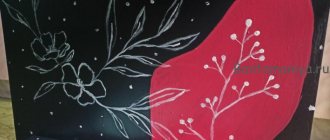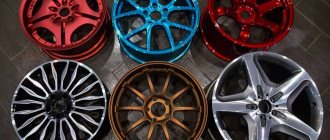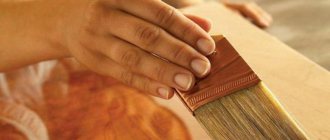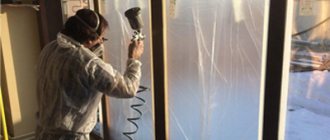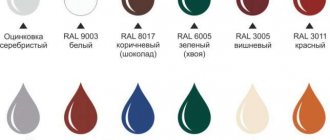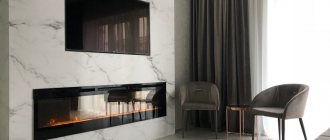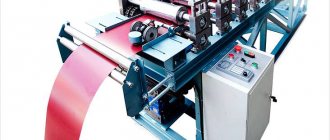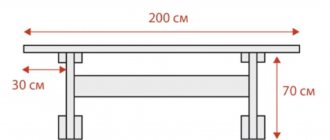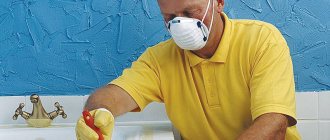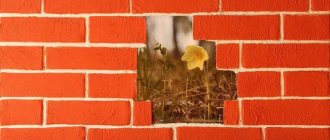Beautiful antique furniture is a decoration for any room. And painting, which you can do yourself, will help restore an old item to an attractive appearance. The main thing is to choose the right paint and application technique.
This is the most important stage of the work. It is important to prepare surfaces for paint application and clean them. The simplest option is chemical, using a special composition, the choice of which depends on the type of old coating. When implementing, it is important to follow safety precautions, work with gloves and in a ventilated area. The second method is thermal, which involves exposing the old coating to warm air or steam. Helps get rid of paint and polish. After heat treatment, the surfaces are cleaned with a scraper and sanded with sandpaper.
Preparing paint for further use
Acrylic water-based paint can be used in the form in which it is sold.
However, in some cases it is more advisable to dilute it. If you plan to apply layers using the spraying method, you simply cannot do without it. Paint that is properly prepared for application is more fluid. Its layer is thinner, but it is distributed more evenly.
There are special formulations for dilution on sale. They help preserve the texture of the coating, be it gloss or matte surface.
Each manufacturer indicates on the jar of the product instructions for its use. By observing the required proportion, you can achieve a very good result.
There is another way to prepare the decorative base for use. To do this, water is added to its composition. The product will become more fluid if you pour 10% liquid into it. If you dilute more, the layer will be too thin. The work will take a long time.
The manufacturer indicates on the packaging how to dilute the product. Acrylic paints, the colors of which are selected in the store, are very diverse. Sellers will help you create the required shade using special equipment.
You should save the tinting code if you need to purchase another product of the same type. But it is better to take coverage with a reserve. Even in factory conditions, the shade may vary slightly for different batches.
Types and characteristics
There are several types of paints, differing in drying speed, texture or some other characteristics.
Dispersive
Such enamels do not contain solvents, which indicates their safety for humans. Paint and varnish coatings ensure rapid evaporation of moisture from wooden or concrete surfaces.
Other features of dispersion compositions include:
- Easy to use. The mixture is applied with a roller, brush or spray. It is easily washed off from the instrument and tray.
- No smell. This quality allows the use of enamel for finishing living rooms. It dries quickly on the surface.
- Possibility of obtaining any shade. You can add any amount of color to the mixture.
Fire retardant acrylic enamel Texotherm and Topcoat-S NEO.
Fireproof
Fire retardant compounds are used to improve fire safety of residential and industrial facilities
Enamels are diluted with organic solvents and applied with caution. The products adhere well to any surfaces
Some mixtures are designed only for processing metal structures.
Under normal conditions, fire retardant paints are no different from ordinary paints. As the temperature increases, they change their structure. The coating breaks down into particles that prevent the spread of fire.
Water-based
basis have the following advantages:
- Insensitivity to mechanical damage. The color of the decorative layer does not change under the influence of ultraviolet rays and moisture.
- Safety. The paints do not contain substances hazardous to humans and animals.
Acrylic-urethane
Finishing materials of this type have a long service life. They are resistant to petroleum products, high humidity, and animal fats. Two-component mixtures are used for processing metal products, hydraulic structures and bridges. Acrylic urethane anti-corrosion.
Acrylate
Acrylate colorants contain a water base, binders, antioxidants, thickeners and antifreeze. Enamels repel dirt, allow moisture to pass through and do not emit toxic fumes.
TOP 7: the best products from global manufacturers
Tikkurila EUro 7
The Tikkurila group of companies is a leader in the production of paints and varnishes in Sweden, Finland and Russia. The association has been taking care of saturating the market with high-quality and safe products for more than 150 years.
Bestseller - Tikkurila EUro 7 - matte paint for walls and ceilings in dry rooms. Great for painting wallpaper. Currently, Tikkurila EUro 7 is discontinued and replaced by Euro Power 7.
The new product is recommended for rooms that require frequent wet cleaning using non-abrasive detergents. The composition is suitable for application on concrete, plaster, brick, plasterboard, fiberboard and chipboard. For tinting, there are 20,000 colors from the Tikkurila Symphony catalog.
Consumption for one layer: from 10–12 m2/l on a flat non-absorbent surface to 7–8 m2/l on an uneven absorbent surface. Diluted with water, dries in 1.5 – 2 hours under normal conditions.
Deckfarbe
Remmers GmbH is a leading German manufacturer of construction chemicals. He considers his motto to be maintaining excellent quality and creating high-tech mixtures.
Among its products, the Deckfarbe series is popular - water-based compounds with high weather resistance. They have good hiding power, water resistance and abrasion resistance. Dries in 3-4 hours. Consumption depends on the type of base, on average 100 ml/m² per layer.
Forwood
Novosibirsk is a leader in the Siberian market of paints and varnishes and is well known for its products. Among them, FORWOOD wood compositions are well known.
FORWOOD 0.9 L. BASE “A” - acrylic matte paint, has a service life on the facade of up to 7 years and a self-cleaning function with sediment, intended for interior and exterior work, has many advantages:
- odorless, environmentally friendly and fireproof;
- forms a wear-resistant elastic vapor-permeable coating;
- has excellent adhesion to any wooden surfaces, putty, concrete, brick;
- contains an antiseptic and water-dirt-repellent additive.
The paint also has a high degree of hiding power - one liter is enough to cover 6-8 square meters. m. surface. The coating dries quickly - no more than 1 hour under standard conditions.
Respect
Manufacturer: Moscow region. The company's motto is product availability for any client. The company produces building materials, including acrylic compounds for wood.
Respect acrylic superwhite paint is intended for painting ceilings and walls in residential and non-residential premises. Fits well on all types of prepared surfaces. Vapor permeable, lightfast, environmentally friendly. Painted surfaces are not affected by fungus. Material consumption – 150-200g per 1 sq. m., the coating dries completely in 3 hours.
Marshall Maestro
Marshall is a paint and varnish brand within the AkzoNobel group of companies. The holding is focused on the production of affordable building materials for both professionals and ordinary buyers.
Marshall Maestro Interior Classic – acrylic water-based paint. Easy to apply and does not form streaks or marks. It has good adhesion to wooden and mineral substrates and is suitable for painting wallpaper without hiding its texture. Dries completely in 4 hours at a consumption of 1 liter per 9 square meters. m.
Adler Lignovit Color
The Austrian company Adler offers paint and varnish products of excellent quality for the European and Russian markets. The company's constant technological improvement helps achieve this.
Adler Lignovit Color paint is intended for exterior and interior use. It is highly resistant to atmospheric influences and contains light-resistant pigments and antiseptics. Elastic and does not peel off. Its consumption is minimal - only about 100 g / 1 m2. The coating takes 3-4 hours to dry.
Optimist
The group is a large domestic manufacturer of goods for repair and decoration. The organization focuses on the production of high-tech materials to meet all customer needs - from simple cosmetic repairs to exclusive interior work. At the same time, the manufacturer tries to maintain the most affordable prices for its products.
The Optimist brand produces washable interior acrylic paint for wooden surfaces. At a low price, it is very economical - only 150-200 g/1 m2 of surface is consumed.
Features of acrylic paint
This type of paint is safe from an environmental point of view. It received this feature during the manufacturing process. The composition contains substances that have no negative effect on the human body.
Comfort and ease of operation
Acrylic paints are completely odorless. This is a plus, as it makes working with them easier. This improves the ease of working with them.
Unlimited color palette
Acrylic comes in a variety of colors and shades. Primary colors allow for high-quality painting. Thanks to the selection of colors and the possibility of mixing, not only structures are painted, but also pictures are created on the surface.
Fast drying
The painted surface becomes dry after 1-3 hours. Drying time depends on the number of layers applied. Despite this feature, the paint retains its strength, elasticity and does not wear off during use of the product.
Acrylic paint, after being applied to furniture, forms a special film. Dirt does not accumulate on it, which reduces product maintenance to a minimum.
Operation and shelf life
The composition of the substance is developed competently, as evidenced by the long life of the product. Acrylic paints last on furniture for 10 years. At the same time, the color saturation is not lost, and the attractiveness is preserved.
Scope of application
Why is acrylic often chosen for painting furniture, despite the place in which it is installed? It is resistant to ultraviolet radiation. Acrylic layers are not afraid of moisture and mechanical damage. Furniture coated with acrylic paint can be placed outdoors in direct sunlight or indoors with high humidity levels.
Another quality is versatility and versatility.
The paint composition is suitable for application to any type of surface. The only exception is some types of plastic. The characteristics of the paint allow it to be combined with different building materials.
Is it possible to paint furniture yourself?
Leather furniture is a high-quality, comfortable and stylish interior frame. But even the highest quality leather changes color and wears over time, various cracks and obvious abrasions appear. The best way to refresh old furniture is to paint it a new color. Therefore, you can paint leather furniture yourself.
Scuff marks on leather upholstery can be repaired by painting.
The main thing in the process is to follow the stages of work and basic safety rules. Painting furniture will give it a new life, so if you want to update the interior in this way, you can safely get down to business after familiarizing yourself with some of the nuances.
If you follow all the recommendations, you can return the product to its original appearance.
Required materials and tools
To carry out the planned work efficiently, it is necessary to prepare the necessary tools.
Soft brush
It is ideal to have a medium-sized brush in your arsenal. With its help, hard-to-reach places are painted. Using a soft brush, paint the end parts of the panel and the corners.
Roller tray
A person who tries to do without this item while painting makes a mistake. The device is made in such a way that during use the roller attachment is impregnated with the composition. As a result, after painting the board there are no gaps left, the color is even and rich.
Masking tape
Adhesive tape is needed to delimit zones. These may be areas that cannot be painted. In another case, they are covered with a different color.
Aerosol acrylic paint
This form of the paint composition allows you to apply the color in an even layer. The tool is useful if the surface to be painted is large. It speeds up the process, saving time and effort.
Adhesive primer
Using a primer, the panel is leveled and also impregnated. This composition prevents excess paint saturation of furniture parts, helping to create an even layer.
Acrylic paint
It dries quickly, is easy to apply and has no pungent odor. Having a water base, it is considered wear-resistant. The surface, which is painted with acrylic, is easy to care for. Acrylic paint is valued for its durability.
Acrylic enamel adheres to the wood. Adding water provides the desired viscosity.
New pens
During painting work, it is possible to replace the handles. This is convenient, since a new color of furniture and selection of fittings helps change the look of the room. Furniture stores offer a wide range of handles.
Sandpaper
When carrying out these types of work, it is good to use several sandpapers. As a rule, they move from a large fraction to a small one. Sandpaper removes the old layer of paint and smoothes the surface.
Rags
A must-have device during painting work. Pieces of cloth are needed to wipe the composition from your hands. Use a rag to wipe down areas where paint has accidentally come into contact. Brushes are also wiped with a cloth.
Degreaser
The substance cleans the surface, promoting the adhesion of paint to the surface. A paint store sells special degreasers. Universal products are also used - gasoline, white spirit, acetone.
Polyethylene
Plays the same role as masking tape. Suitable for sealing large areas. The need for polyethylene arises when applying paint using an aerosol.
Screwdriver Set
With their help, shelves are removed, and, if necessary, even disassembled into parts. Screwdrivers can also be used to stir the composition.
The nuances of painting various surfaces
The technology is the same except for some points. Depending on the coverage, some processes may be skipped.
Varnished
The initial stage is degreasing. After which the surface is sanded and washed with water to remove remaining dust and small particles. Upon completion of the preparatory work, they proceed to painting.
Laminated
The product is a material - artificial wood. A two-component primer is applied to the surface of the boards, which is an industrial version. The good thing about the product in this case is that it has exceptional adhesion to any surface, regardless of type.
Laminated
The variety is rare. The main preparatory stage, on which the quality of painting depends, is sanding. Without it, they don’t even think about a positive result.
Veneered
The main requirement for furniture made from this material is integrity. There should be no chips or various types of damage on the surface. Even small cracks play a big role.
Before painting, the furniture is disassembled into parts. There should be a bare frame before painting can begin. Crates, drawers and furniture parts should not interfere and should be kept to the side. Otherwise, they may get stained with paint.
Scope of application
Acrylic paint - white or colored - is used for almost all types of rooms. It is used both as a main shade and as a means for painting.
Since the product is environmentally friendly and odorless, it can be used even in children's rooms. If a child is prone to allergies, acrylic will be a good solution for interior design.
Also, due to its resistance to moisture, such a coating is used when decorating the interior of a kitchen or bathroom. However, places where water splashes frequently (sink, sink, bathtub) should be framed with tiles. This will extend the life of the coating.
If you plan to apply the paint in close proximity to a radiator or hob, you need to purchase a special type. It has increased durability.
The basis for applying the coating can be any porous surface. To reduce paint consumption, you should first prime the walls or ceiling.
Briefly about the main thing
Repainting a cabinet a different color on your own is a simple job that only requires care, time and a set of necessary tools. The process is divided into several stages. The main task is to create a rough surface that helps the paint lie evenly and tightly. The cabinet is first cleaned, defects are repaired and primed.
The main problem may arise when removing the old varnish or film layer. It is solved mechanically, chemically or thermally. The paint is applied in several layers, the number of which allows you to emphasize or hide the texture of the base. For the finishing coat, choose wax or water-based or polyurethane-based varnish.
Ratings 0
Types of furniture coverings
For furniture restoration, both transparent and colored paints and varnishes are used. When choosing, take into account the advantages and disadvantages of each variety.
Acrylic coatings
The most common material for decorating furniture is quick-drying acrylic-based paint. It has no pungent odor, does not emit toxic fumes, and does not cause fire. The composition is suitable for treating any surface, including wood. Acrylic paints adhere well to the base, including OSB, chipboard, and MDF boards. This allows you to paint objects without first applying a primer.
This extends the life of the furniture. In a hardware store you can find acrylic paint with dirt- and water-repellent properties. These additives make it easier to clean wooden surfaces.
Latex based paint
It is believed that it is best to paint wooden objects with an oil composition. The product has an unpleasant odor, which is why you have to work outside. It is not recommended to restore furniture at home. Now you can refuse to use oil-based paints and varnishes, since safer latex emulsion has similar properties.
The main advantages of this product are:
- Deep penetration. The paint is absorbed into the thickness of the wood, forming a moisture-resistant film. It prevents the base from destruction when wet and wet cleaning.
- Vapor permeability. Latex film does not become covered with bubbles, while allowing air to pass through well.
Water soluble liquids
Water-dispersed coatings and products containing polymer resins are becoming increasingly popular. This is due to the presence of a large number of positive qualities:
- high drying speed;
- safety (the paint does not emit toxic fumes, so it can be used to decorate furniture in children's rooms);
- water resistance and vapor permeability of the finished coating;
- variety of types (paints are matte or glossy, covering or translucent);
- ease of tinting (with the help of pigment the white base can be given a shade of any intensity);
- resistance of the dried coating to low temperatures.
The last property is considered the most important. Painted objects are resistant to cold, but the composition itself cannot be stored in unheated rooms. When freezing, the structure of the emulsion is disrupted.
Transparent coatings
This category includes varnishes, waxes, stains and glazes. The products are transparent or colored.
They have the following properties:
- leave the wood texture visible, emphasizing the beauty of the natural material;
- ensure evaporation of moisture from the wooden surface;
- protect furniture from fading under the influence of sunlight.
If you need to repaint new wooden furniture, it is recommended to use varnish or impregnation.
Organic enamels
These funds were used in the past, but now they are trying to abandon them.
This is explained by the following features of paintwork materials that complicate the painting process:
- toxicity;
- fire hazard;
- a strong unpleasant odor that persists for several days after the coating dries.
However, the coating does not allow air to pass through, so objects made from raw wood cannot be painted with organic enamel.
Silicone paint
It combines the following advantages of silicone and acrylic resins:
- resistance to abrasion and moisture;
- vapor permeability;
- increased elasticity, helping to fill deep cracks on a wooden surface;
- persistent color that does not change over time;
- absence of bubbles on the finished coating;
- resistance to pollution.
Silicone water-based paint is the most durable finishing material that does not have a strong odor. The disadvantage is the high cost.
Useful tips
- First, you need to study the material from which the furniture is made, the features of its pre-processing, and calculate the surface area.
- In online stores you can find all the information about paint: approximate calculation of consumption, drying speed, composition. You can also read reviews about a specific manufacturer on various websites to decide which paint is best to paint furniture with.
- Before you start painting, it is necessary to inspect the surface in good light from different angles for irregularities, since after painting, and even more so after varnishing, all roughness will be very noticeable.
- Individual parts must be painted from the ends, then move to the base.
- The paint should be applied in long strokes using the entire brush. You can even out the layer by lightly going over it with the tip of the brush.
To achieve excellent results, you do not need to save time on preparatory work. After all, a perfectly flat, primed surface not only gives a beautiful look to freshly painted furniture, but also extends its service life. It is also important to know what paint to paint old furniture so that the result meets your expectations.
Preparatory stage
To paint furniture yourself, it is recommended to do it in a separate room. The process may take several days, so it is better to have the furniture in another room. In this way, it will be possible to protect your home from dust. It is also recommended to wear safety glasses, gloves and a gown while working.
To prepare the furniture you will need:
- wood putty;
- sandpaper;
- rubber spatula;
- acrylic primer;
- brush (roller).
Furniture surface preparation is as follows:
- the product is disassembled;
- remove paint and varnish;
- primed, puttied.
The first step is to replace or repair all mechanisms. To do this, the furniture is disassembled into individual elements, handles and hanging parts are removed. Disassembly of interior items is also necessary in order to paint all elements evenly and completely. It is impossible to do this while the furniture is assembled. When the restoration of the mechanisms is completed, you can begin preparing the surface for painting.
Disassembling furniture before painting
Old paint must first be removed
Primer of wooden furniture
putty
How to ensure correct application
The sprayed suspension will ensure the durability of the coating, but there are some nuances to application. Any type of aerosol paint in cans for wood must be sprayed at a certain distance.
If the aerosol is held too close, the composition will apply unevenly. Removing a spray bottle over a long distance is an unnecessary waste of a large percentage of the paint.
The optimal distance to the workpiece is no more than 25-30 cm.
No matter how competently the composition is applied, it is important to take into account the specifics of applying the aerosol. It is better to cover floors and walls (other surfaces) with film or old newspapers. Some of the fine suspension will inevitably settle on other objects, so it is important to exclude drafts.
Any type of aerosol paint in cans for wood must be sprayed at a certain distance.
Regardless of the composition, the quality of painting is guaranteed if the following conditions are met:
- Preliminary surface preparation (cleaning, sanding with fine-grained sandpaper, removing resin pockets on fresh wood);
- Treatment with a fungicide (antifungal compound) if these are outdoor products or furniture for rooms with high humidity;
- Coating with a primer, the composition of which is suitable for the type of paint and varnish;
- The wood must be dry before spray painting;
- The coating is made in 2 layers from a distance of 20-25cm, the first layer must dry completely.
You cannot work with aerosols near an open fire; many mixtures ignite quickly. Upon completion of work, good ventilation is necessary.
When starting painting, it is better to check whether the hole is clogged - try it on unnecessary materials. The aerosol must be shaken before use to eliminate stratification of the suspension. Adjacent surfaces are covered with masking tape and film.
You cannot work with aerosols near an open fire; many mixtures ignite quickly.
Required tools and materials
Only through the use of appropriate tools and high-quality materials can excellent painting results be achieved.
Basic tools used for repair work:
- Brushes – available with natural bristles (for working with oil, alkyd paints) and artificial fibers (for applying latex and acrylic compositions);
- Paint rollers make repair work much easier. Due to the simplicity of the design, no special skills are required. It is especially convenient to paint large areas of the surface with rollers (wood panels, facades). The only drawback is that it is impossible to paint small or narrow areas;
- Paint sprayers/paint guns allow you to apply paint evenly and get a smooth surface (sometimes difficult to achieve with a brush or roller). The time for repair work is also significantly reduced;
- Sandpaper, wire brush, masking tape, spatulas.
Various compositions are used for high-quality painting of objects.
When choosing paints, it is important to consider their features:
- Oil paint is created on the basis of drying oil, pigments, and various fillers. The opaque coating is quite durable and can be washed with detergents that do not contain abrasives. It is better to apply paint with brushes. A significant drawback is the long drying time of the painted surface and a strong unpleasant odor;
- Water-based compositions are characterized by harmlessness and quick drying. You can apply the paint with a roller - the layers are uniform. Water-based paints are even used for painting leather furniture (it is recommended to apply the composition with a sponge). The mixtures are vinyl (durable and easy to clean), acrylic (create a protective breathable layer), latex (form durable and strong surfaces). Acrylic paints are great for DIY coating of chipboard furniture. A very popular trend in furnishings is painting furniture with acrylic (photos are presented below);
- Solvent-based paints are used to create alkyd paints (ideal for painting garden furniture and outdoor terraces), silicone paints;
- The technology for painting furniture involves the use of a primer, which ensures adhesion of the paint/varnish and increases the durability of the furniture (disinfects and protects the material). Furniture primers are produced on different bases (acrylic, alkyd, silicone-acrylic, shellac, epoxy). According to their functional properties, they are antiseptic, deep penetration, and universal.
Oily
Water-based
Alkyd
Work technology
Painting furniture with your own hands will not take much time and effort if you prepare the necessary tools, materials and consistently carry out all work processes.
Preparatory stage
For convenient work and high-quality painting of furniture structures (cabinets, chests of drawers, tables), it is recommended to disassemble them minimally: remove the doors, take out the drawers and unscrew the handles and locks. If there are mirrors or glass on the facades, then their surface is carefully covered with paper.
Furniture before painting must be thoroughly cleaned. Dust and dirt from the surface of the furniture are washed off with liquid detergent, and the items are left to dry. To remove the old coating, use sandpaper (polished furniture) or paint thinner. The special composition is applied with a brush (especially carefully on the side and corner areas of the furniture), allowed to dry for a few minutes, the surfaces are re-coated and the old paint is removed with a spatula. At the corners, remove the coating with a wire brush or sandpaper. If you plan to paint lacquered furniture, then the removal of the old coating is carried out especially carefully, otherwise the new layers will not be applied and adhere well.
It is advisable to remove fine dust using a vacuum cleaner or brush (wipes can cause dust to get into the cracks). Chips or deep cracks are repaired with putty.
Let's disassemble the design
Cleaning the surface
Apply the remover
We process the coating with a spatula
Primer
This stage allows you to significantly reduce paint consumption, since the composition fills the pores and cracks of the wood. On small items (shelves, chairs) the primer is applied with a brush. To cover large, flat areas (countertops, cabinets), it is advisable to use a roller. Manufacturers usually indicate on the packaging the tool that is recommended to be used.
For a high-quality primer, the composition is applied twice. The first time, the mixture is slightly diluted - this helps fill small cracks. The products are left to dry for a couple of hours. When re-priming, the products are coated with undiluted composition.
Painting methods
To apply a decorative layer, you can use equipment for painting furniture or traditional brushes and rollers. Moreover, there are several options for applying paint:
- To apply a uniform coating to any objects (cabinet, chair) in a short period of time, it is better to use a special tool. Before choosing a spray gun for painting objects at home, you need to decide how often it will be used. For rare jobs, a battery-powered spray gun is quite suitable, as it is easy to work in inconvenient (hard-to-reach) places. To ensure that the paint is applied in an even layer, the jet is directed perpendicular to the surface, moving the apparatus in a circular motion. Painting MDF using a spray gun is simply perfect;
- The use of rollers and brushes is one of the traditional and least expensive methods. Brushes are used to paint small elements, corners, and seams, and it’s quicker to cover even areas with a roller. It is important to apply paint in one direction. Moreover, wood products are painted along the grain. While one coat of coating may be sufficient for a wooden object, painting of chipboard furniture is carried out several times. If air bubbles appear on the painted surface, they are sanded and the areas are then repainted. To prevent the occurrence of such defects, special containers - cuvettes - must be used. They allow you to squeeze out excess paint from the roller.
To create a two-color coating, use masking tape. First you need to decide on the design and choose harmonious shades of paint. Initially, the furniture is painted in the main shade of paint and left to dry. Then the areas where the color will not change are pasted over. It is important to stick the tape tightly, otherwise uneven contours and drips may result. Apply a coat of additional paint, leave the furniture to dry and then remove the tape.
Apply the first layer
Reapply the composition
Sand when bubbles form
Post-processing
Today, designers offer many ideas on how to repaint furniture in an unusual way. By using simple techniques, you can make any product a real interior decoration. When finishing antique (vintage) furniture, a water-dispersed acrylic mixture is applied with a paint roller. If you use a brush, you need to make broad strokes, avoiding drips (they can be eliminated with sandpaper). After the paint has dried, they begin to create a scuffed effect: the natural areas of paint abrasion (corners, near handles) are rubbed with fine sandpaper. To give the furniture a natural look, the entire surface is treated with light movements. Dust is removed and another layer of paint is applied to make the coating smooth.
Updating by using different shades of furniture colors and technological techniques can be given a different style. Smooth glossy surfaces are suitable for modern interiors, and furniture with an artificial aging effect will fit perfectly into Provence and country furnishings.
Sanding
Cover with paint
Rub the coating with a sponge
Sanding some parts with sandpaper
Rules for choosing colors
In order for the apartment owner to be satisfied with the painted furniture, it is important to choose the right paint, taking into account what style is used in the interior. There are a number of popular directions - they require the use of different types of coloring mixtures
- Minimalism and Scandinavian style can be combined into one category, since both options are characterized by a predominance of simple lines, a minimum of unnecessary details and the use of only natural materials. In colors it is required to adhere to monochrome, that is, dark colors should contrast with pastel colors and vice versa. The color with which the furniture will be painted is selected depending on the shade of the walls;
- The complete opposite is the boho style - the brightest colors are used here. In this case, you can artificially age the furniture, for example, use Shabby paint;
- When using the Mediterranean style, wenge paint can be used, but the palette should be based on calm light colors. In this situation, it is also possible to stylize the furniture as antique;
- Moroccan exoticism involves the use of bright colors; it would also be appropriate to create multi-layered textures;
- When using an industrial style, you need to understand that in this case, roughly painted interior items are welcome. Since the signature feature of the style is a large amount of light and free space, thixotropic paint in light colors can be used;
- If the industrial style is a modern trend, then Provence is closer to antiquity. The colors should be calm, pastel, and the furniture can be specially made old using paint. Aged furniture is also suitable for the Victorian style; as for the color of the furniture, then you need paint for leather furniture in light shades.
In addition to style, the material of the furniture is also of great importance. Furniture made from MDF or plywood requires rather labor-intensive painting. The usual one does not fit well on the surface - it is better to use spectacular paints. For plastic furniture, it makes sense to use thick pigmented mixtures.
You also need to learn how to use various coloring techniques. For Provence, Mediterranean and eclectic styles, the furniture will need to be aged
It is very important to wait until the previous coat of paint has dried before applying the next one. Matte paint should be used in combination with dark wax
When painting MDF furniture at home is completed, you will need to go over it with sandpaper.
What is better drying oil or primer?
The best primer for wood that will be coated with oil paint is drying oil. It must be applied in two layers. The second layer is applied only after the first has dried. ... It is necessary to dry the surface of the tree on all sides, this will protect the tree from various damages.
Interesting materials:
What to put under the mattress? What is the technological process? What is required for animal life? What is required during a divorce? What is harder than titanium and diamond? What does Wasserman have in his vest? What do hackers teach? What can iPhone 11 do? What does the profession of a general machine operator include? What is more important: a sign or a traffic light?
What types of acrylic paints are there?
Various recipes are used to prepare coloring compositions. They can be classified according to several criteria.
By solvent type
- water-dispersed - as a rule, used during internal repair work. They are non-toxic and do not pose a threat to human health;
- paints based on organic solvents are practical for exterior decoration. Their advantage is the possibility of application at any air temperature and the increased strength of the created coating, which can withstand even direct mechanical impact. Due to this, this type of paint is in demand in the automotive industry.
By purpose
What can be painted with acrylic paint? Almost everything. The main thing is to choose the right composition. Acrylic-based enamels are classified according to their types and scope of application.
And so, what can you use acrylic paints for:
- external and internal finishing works;
- car painting;
- fabric finishing;
- art painting;
- for nails
Acrylic compositions are distinguished according to the type of surface to be painted.
- for metal surfaces;
- for finishing works (walls, ceilings);
- universal.
- for processing wooden coverings.
- for glass and ceramics
- for skin
As you can see, paints come in many different types. Depending on the purpose of use and scope of application, the structure and properties of the polymer composition has its own characteristics. You need to take this into account before using paint.
Acrylic compositions for outdoor use contain additional components that provide increased resistance to ultraviolet radiation and moisture, as well as mechanical damage. They are great for painting building exteriors, exterior doors and frames, fencing or any other outdoor surfaces.
Acrylic-based paints for interior decoration are less resistant to external irritants - this is not required of them. But they fit perfectly on any surface and retain their external qualities for a long time.
Acrylic paints for automotive body work allow you to turn any vehicle into an exclusive work of art. Airbrushing is one of the ways to highlight a production model by applying an unusual design to it. Considering how much acrylic paints cost, this is an excellent solution.
The compositions used for dyeing fabrics differ from their industrial counterparts in the less aggressive nature of the liquid medium. They provide high-quality impregnation of the fabric due to special components on a dispersing basis, which ensure diffusion of the dye into the fabric fibers. To know how to properly apply acrylic to fabric, you need to study in detail the instructions on the paint container.
The specifics of manufacturing acrylic manicure paints involve the use of dissolvers, which make it possible to achieve complete grinding of solid polymer fractions. Many representatives of the fair sex already know what acrylic is, since such a procedure is in great demand in beauty salons.
By functions and effects
According to additional functions, acrylic-based enamels are divided into light- and water-resistant, high-strength paints, and washable ones.
According to the glare of the coating being formed, acrylic paints are:
- glossy;
- semi-gloss;
- matte;
- matte-silky.
By effects:
- metallic
- nacre
- fluorescent

